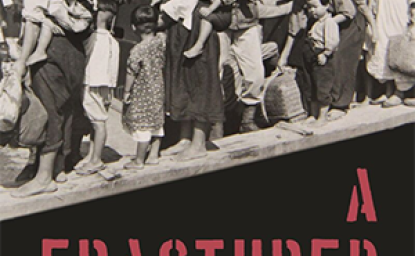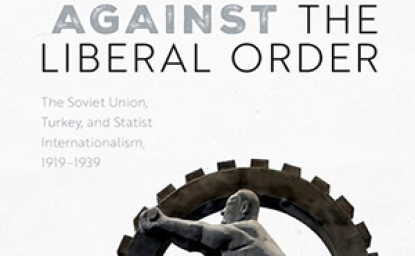Are Political Parties in Trouble?


To view a version of this report that includes supplemental graphs, click here to download a PDF.
Are Political Parties in Trouble?
Patrick Liddiard
Abstract: Are political parties worldwide in trouble? Are they as influential as they used to be – in terms of their ability to recruit and retain members, get their voters to turn out in elections, and maintain voters’ loyalty from election to election? Global data show countries in many regions of the world have experienced decreases in political party influence in terms of declining membership, voter turnout, and party system stability, with implications for democratic accountability, the institutionalization of political competition, and the quality of democracy itself. Of greatest concern, Europe—the region in which political parties were born and best institutionalized—has shown some of the clearest and most negative indicators.
Are political parties worldwide in trouble? Are they as influential as they used to be – in terms of their ability to recruit and retain members, get their voters to turn out in elections, and maintain voters’ loyalty from election to election? Since at least the 1990s, observers like Ignazi Piero, Russel Dalton, and Martin Wattenberg have noted a declining role for political parties in long-standing democracies,[i] and Thomas Carothers in 2006 found widespread public dissatisfaction with political parties in the countries that experienced the “third wave” of democratization from the 1970s through the 1990s.[ii] More recent examples from either side of the Atlantic would suggest that the influence of political parties has continued to decline.
In September, the populist and anti-establishment Sweden Democrats became the third largest party in the parliament after winning 18 percent of the vote.[iii] In two elections to state parliaments in Germany in October, traditional center-left and center-right parties saw their combined vote share decline more than 20 percentage points, with voters increasingly turning to niche parties like the Greens, and with the far-right Alternative for Germany entering the Bavarian and Hesse parliaments for the first time.[iv] And the rise of Brazil’s Social Liberal Party in the Chamber of Deputies after its takeover by the populist and now President-elect Jair Bolsonaro has come at the expense of traditional center-right parties.
These recent examples are part of broader global trends that highlight the weakening of traditional political parties, to include sharp declines in electoral support for center-left parties in European countries like France, Germany, and the UK[v] as well as the failure of political parties to channel political participation in most countries that experienced the Arab Spring.[vi]
In E. E. Schattschneider’s famous formulation, “Political parties created modern democracy, and modern democracy is unthinkable save in terms of the parties.”[vii] Declining party influence therefore has implications for democratic accountability, the institutionalization of political competition, and the quality of democracy itself. Global data show countries in many regions of the world have experienced decreases in political party influence in terms of declining membership, voter turnout, and party system stability. Of greatest concern, Europe—the region in which political parties were born and best institutionalized—has shown some of the clearest and most negative indicators.
Declining Party Membership
Recent research by Ingrid van Biezen and Thomas Poguntke shows that party membership in Europe has been on the decline since at least 1960, when nearly 15 percent of the electorate in Europe’s democracies were affiliated with a political party. By 1980, that share had shrunk to 10 percent, and then to five percent by 2008. This decline can’t be explained by the inclusion of new democracies from Central and Eastern Europe—with shorter histories of democratic party membership—in the totals after 1989; some of the biggest declines since 1980 were in Austria and the Nordic Countries of Finland, Norway, and Sweden, in which party membership declined between 5 and 11 percentage points.[viii]
Europe is one of the few regions in the world for which scholars have high-quality data on party membership, but some long-standing democracies in other regions have similarly shown declines. Susan Scarrow found that the share of Australia’s electorate belonging to political parties declined by more than half between the 1970s and 1990s—from nearly four percent to 1.5 percent—and the corresponding share of New Zealand’s electorate declined nearly 22 percentage points from the 1950s to the 1990s.[ix] Paul Whiteley’s examination of World Values Survey data for 25 countries found that respondents in all but four countries reported lower party membership between 1989 and 2004, including declines of one or two percentage points in Canada, Chile, Mexico, and South Korea; his examination of 2004 survey data for 36 countries found additional evidence of party membership decline in in Brazil and New Zealand, where former party members outnumbered current party members.[x]
Declining Voter Turnout
In tandem with its decline in party membership, Europe has experienced the broadest decline in voter turnout in the world. In the past 50 years, voter turnout in lower house legislative elections in countries worldwide with a minimum of political party competition[1] has declined seven percentage points, from nearly 71 percent to 64 percent.[2] But Europe’s drop was more than twice as steep: 17 percentage points, from nearly 83 percent to 65 percent.[3] Although the Middle East and North Africa (MENA) was the region that experienced the most dramatic drop off in voter turnout in the same period—38 percentage points—the decline in Europe affected a far larger population. In the most recent election cycle from 2014-2018, Europe’s more than 863 million registered voters constituted 25 percent of registered voters worldwide, far larger than the nearly 158 million registered voters in MENA in the same period.
The decline in voter turnout in Europe was strong and steady, with only East Asia and the Pacific—home to other long-standing democracies like Australia, Japan, South Korea, and New Zealand—experiencing a significant decline of eight percentage points. In three other regions—Central and South Asia, Latin America, and Sub-Saharan Africa—there was no clear pattern in voter turnout in the past 50 years, as turnout of registered voters varied by as much as eight, 17, and 30 percentage points between election cycles in the respective regions. Variation in turnout in Latin America decreased as more eligible voters were added to the voter rolls during the third wave of democratization starting in the 1970s, but variation has remained high in Sub-Saharan Africa, a region in which nearly one quarter of eligible voters are still excluded from the rolls, according to data from International IDEA.[xi]
Declining Party System Stability
A number of studies have found Western Europe to have the most stable party system historically. That is, Western Europe has been the region with the lowest variation in party vote shares from election to election, with only about 10 percent of voters changing their party vote between elections since 1946. By comparison, the countries of Central and Eastern Europe and the Former Soviet Union have had the most volatile party systems, with nearly 45 percent of the electorate changing votes between elections, and the countries of Asia, Latin America, and Sub-Saharan Africa have had electoral volatility between the two extremes, generally ranging between roughly 25 to 30 percent.[xii]
Alessandro Chiaramonte and Vincenzo Emanuele have found that party system volatility has increased in Western Europe since World War II and accelerated since the end of the Cold War. The average Western European electorate switched votes roughly eight percent of the time between 1946 and 1968, roughly nine percent of the time between 1969 and 1991, and nearly 13 percent of the time between 1992 and 2015. The recent increase in volatility is associated with the collapse of old parties and emergence of new ones, with significant replacement of parties occurring in 23 percent of elections since 1992, nearly twice the rate it occurred in elections between 1946 and 1968.[xiii] By comparison, the average country in Asia and Sub-Saharan Africa has shown no significant change in overall party system volatility, and party collapse and replacement has actually decreased in Latin America and Sub-Saharan Africa since 2000.[xiv]
Declining Social Bases of Traditional Political Parties
In Europe, political parties’ declining influence has tracked with declining membership in organizations that have served as social bases for parties and from which parties originally emerged during democratization in the late 19th and early 20th Centuries. With the notable exception of the Nordic countries, van Biezen and Poguntke found that membership in labor unions in most Western European countries declined significantly between 1970 and 2010, with the share of workers belonging to labor unions decreasing by roughly 15 percentage points in such major economies as France, Germany, and the UK.[xv] Electoral support for traditional center-left parties in most of these countries has dropped accordingly; France’s Socialists experienced the most spectacular electoral collapse, earning less than eight percent of the vote in parliamentary elections in 2017, or a little more than one-quarter of their vote share in 2012.[xvi]
Data suggest a similar membership decline has occurred in the churches from which many center-right Christian democratic parties emerged historically. Van Biezen and Poguntke found that, in surveys between 1975 and 2010, the share of Western European respondents who considered themselves a member of their country’s dominant Catholic or Protestant denomination declined roughly seven percentage points.[xvii] This declining church membership has translated into lower support for religious parties, with Catholic majority countries experiencing the sharpest drops; Pippa Norris and Ronald Inglehart found that religious parties in Belgium and France lost 20 percentage points off their vote share between 1945 and 1994.[xviii]
How Disconcerting Are These Signs?
Given the historical context, this worldwide decline in party strength, particularly in Europe, is not necessarily unusual. Voter turnout in Europe has historically been the highest worldwide, so its decline during the past 50 years brings it down to the global average. Party system volatility has accompanied the emergence of new parties before, including in Europe in the 1980s and 1990s.[xix] Party replacement can renew the democratic process, with new and innovative parties emerging to replace unsuccessful ones. Lastly, falling membership in labor unions and national churches in Europe suggests that declining political party influence in Europe is related to broader socioeconomic trends.
However, declining voter turnout in multiple regions—Europe and East Asia Pacific, home to some of the wealthiest and most durable democracies, and MENA, home of the most recent wave of failed democratization—suggests Europe could be the leading edge of a broader increase in party system volatility. This is especially true as party system volatility accelerates in Europe, historically home to the most durable party system, because multiple studies have found that the passage of time does not significantly reduce party system volatility, despite expectations to the contrary. [xx] And a worldwide decline in political party influence would raise fundamental issues of democratic accountability, an issue that is already associated with increasing unrest worldwide, and is likely to degrade the quality of democracy worldwide in the future.
Issues of Democratic Accountability
Political parties have been a key part of democratic accountability, aggregating voter interests and translating these preferences into policy by providing easy-to-identify “brands.” Strong, broad-based parties offer clear and programmatic policy platforms by which voters can collectively evaluate subsequent government performance. These identifiable brands also facilitates collective action, with opposition parties serving as focal points for voter mobilization against incumbent parties that fail to deliver good governance.[xxi]
If political parties are weakening, representing shrinking shares of the electorate with fewer cross-cutting and collective interests, then fewer citizens will have the information or organizational ability to hold the government accountable for its performance. The weakening of these institutionalized channels for political competition portends greater public dissatisfaction with government and increased unrest, echoing earlier, pre-democratic periods. The lack of accountability mechanisms before the advent of democratization led to repeated bouts of unrest because citizens could never be certain that a government would institutionalize reforms promised in response to earlier agitation for reform.[xxii]
How Political Parties Tamed Unrest during Earlier Waves of Democratization
Historically, political parties have channeled anti-government mass mobilization into more durable democratic outcomes because party leaders were better able to draw on their experience in political decision-making, access to information on their own organizational strength, and understanding of elite politics to ascertain the most opportune times to press for political change.[xxiii] For example, dozens of anti-monarchical mass uprisings swept Europe in 1848 after French protesters ousted King Louis-Philippe. However, Kurt Weyland found these uprisings failed to produced lasting political liberalization—with monarchs beginning to roll back their reforms as early as 1849—in large part because the uncoordinated, politically inexperienced protesters incorrectly assessed that the monarchs in their own countries were just as politically weak as the French king.[xxiv]
In contrast, Weyland suggests political parties’ moderation of unrest in the closing months of World War I produced more durable democratization in Western European countries. After strikes inspired by the Russian Revolution spontaneously broke out in several Western European countries beginning in 1917, pre-existing mass organizations like Social Democratic parties and their allied labor unions in Austria and Germany worked to temper unrest and press for reform once the war was over. Social Democratic leaders correctly assessed the timing was inopportune because of the states’ continuing ability to repress demonstrators, the negative politics of disrupting the war effort, and the potential for unrest to spiral into Communist revolutions that would sweep the Social Democrats aside.[xxv] This was not just a phenomenon in the vanquished countries; for example, Britain’s Labor party and its associated trade unions probably discouraged widespread labor unrest during the war because of their well-founded expectation that the working class’s loyalty to the war effort would be rewarded with expanded voting rights in peacetime. [xxvi]
Declining Party Influence Has Produced Greater Unrest
As we would expect in a world of political parties with less programmatic policy platforms or clear links to social groups, unrest has increased during the past 30 years, exemplified by the experiences of countries in Latin America and MENA. The party systems in Argentina, Bolivia, Costa Rica, Ecuador, Peru, and Venezuela radically transformed after candidates elected on center-left platforms enacted market reforms traditionally associated with parties of the center-right in the 1980s and 1990. Kenneth Roberts suggests this policy incoherence, reversing party platforms while in office, precipitating mass unrest and the emergence of several new parties as the center-left parties lost many of their traditional supporters, particularly from the labor movement.[xxvii]
More recently, the explosion of largely unsuccessful anti-regime protests in the Arab Spring resulted, in part, from the dearth of strong, membership-based organizations in the Middle East in North Africa that could mediate between the governments and publics and better determine when the time was ripe to negotiate reforms. For example, Tunisia was the only Arab Spring country to emerge as a democracy in part because of the moderating effect of its national labor union, the Tunisian General Labor Union (UGTT). In contrast to more spontaneous protests in countries like Egypt, Libya, and Syria, the UGTT was instrumental in successfully expanding the scope of anti-regime protests just before the ouster of Ben Ali in 2011[xxviii] as well as restraining calls to oust the subsequent democratically-elected government in 2013.[xxix]
These regional examples fit into a broader global trend. Worldwide, Erica Chenoweth and Maria Stephan have found that nonviolent antigovernment mass mobilization[4] has increased at a nearly exponential rate since World War II, from eight in the 1950s to 49 between 2010 and 2015. However, the profusion of mass mobilization has produced much less success, just as we’d expect if political parties worldwide were less influential and adept at channeling unrest. Campaigns between 2010 and 2015 were successful 30 percent of the time, less than half their success rate in the 1990s and far below the 40 to 50 percent success rates they experienced in the 1960s, 1970s, and 1980s.[xxx]
Declining Political Party Influence Risks Costly Democratic Decline
Beyond the current expansion of unrest, declining political party influence tends to be self-reinforcing and risks greater democratic decline. Political neophytes, less steeped in party traditions, tend to take a more personalistic approach to politics and often circumvent party apparatus by appealing directly to voters through mass media. Their lack of experience is also associated with lower respect for democratic norms. In a study of Latin American democracies, Kurt Mainwaring found that legislators with less previous political experience were less likely agree with statements such as “Without political parties, there can’t be democracy” or “Democracy is preferable to all other forms of government.” [xxxi]
Once in office, more personalist politicians can undermine democratic norms such as the rule of law, creating greater opportunities for corruption, and even reversion to autocracy. For example, Italy’s perceptions of control of corruption as measured by Transparency International declined over much of Silvio Berlusconi’s term as Prime Minister from 2001-2006; this was in part because his politically inexperienced and personalistic Forza Italia party sought to pass laws to shield him from multiple corruption probes (albeit unsuccessfully).[xxxii] A more serious reversion occurred in Venezuela in 2005, when the government’s restrictions of freedom of expression and its discrimination against opposition members in the civil service[xxxiii] severely undermined opposition efforts to compete in elections, amounting to a backslide to autocracy. Chavez had previously come to power in 1998 through a weakly institutionalized, personality-driven party and had systematically worked to remove judicial, legislative, and administrative constraints on his power.[xxxiv]
Declining political party influence risks broader economic costs by creating greater policy uncertainty and lowering countries’ respect for democratic principles. Countries with less influential parties and greater party system volatility tend to have less policy continuity from election to election because of increased party turnover, and this policy uncertainty can discourage foreign investment. For example, during a period of high volatility in parliamentary elections in France from 1993 through 2002—in which the largest party would lose at least one-sixth of the seats in the National Assembly during the subsequent election[xxxv]—foreign direct investment fluctuated dramatically in the year after the election, dropping by a quarter in 1994, rising by nearly 30 percent in 1998, and falling again by nearly 20 percent in 2003.[xxxvi]
Economic costs can be higher in countries in which the decline in influence in traditional political parties leads to the rise of new parties with authoritarian tendencies. Foreign businesses often look at countries’ respect for democratic principles, such as rule of law, as indicators for how safe their investments will be from government expropriation, and a 2015 review by Freedom House found that more autocratic states had worse business climates.[xxxvii] For example, while Chavez was consolidating power in the executive in Venezuela in the 2000s, foreign investment sharply declined as Chavez cancelled a number of foreign mining and petroleum contracts. [xxxviii]
Looking to the Past to Understand the Future
Looking around the world today, the decline in party influence that observers noted since at least the 1990s has continued and potentially accelerated. This decline is central to numerous contemporary issues of democratic governance worldwide, including reduced democratic accountability and greater unrest, and it risks economically costly subversions of the rule of law, ranging from grand corruption to reversion to autocracy. Understanding how countries can mitigate the political and social costs associated with declining political party influence worldwide will require looking into the recent past to understand the drivers of the decline since World War II.
The next in this series of occasional papers will begin to explore these drivers, to include economic factors like deindustrialization and the declining salience of class as an identity in political mobilization, social factors like shifts from materialist to post-materialist identities, and technological factors such as new communication technologies that reduce the utility of party organizations for political mobilization. Furthering our understanding will also require looking into the beginnings of democratization in the 19th and 20th Century, when political parties first developed and incorporated ordinary citizens into the fight for more representative and accountable government.
The author is an employee of the United States Government, which is funding his fellowship at the Wilson Center. All statements of fact, opinion, or analysis in this work are those of the author and do not reflect an official position or views of the Government or of the Wilson Center.
[1] These are countries that the Polity database codes as having Political Competition greater than or equal to 3 on its 10 point scale. Three is considered “Authoritarian-guided liberalization of repressed or restricted competition or the deepening of hegemonic control.” Countries scoring lower than 3 on Polity’s Political Competition scale include the world’s most autocratic countries, such as contemporary China or historical one-party states in Sub-Saharan Africa. Data from https://www.systemicpeace.org/
[2] See the appendix or graphs by region.
[3] This, again, is not simply a case of Central and Eastern European countries bringing down the average after 1989; voter turnout in the long-standing democracies of Western and Northern Europe in the past 50 years similarly dropped 15 percentage points, from 83 percent to 68 percent.
[4] Defined by Chenoweth and Stephan as movements of at least 1,000 participants over the course of at least a week seeking to remove incumbent leaders, expel foreign military occupation, or achieve territorial independence.
[i] Piero Ignazi, “The Crisis of Political Parties and the Rise of New Political Parties”, Party Politics, Vol. 2, No. 4, pp. 549-66, October 1996; Russel J. Dalton and Martin P. Wattenberg, eds, Parties Without Partisans: Political Change in Advanced Industrial Democracies, Oxford University Press, 2000
[ii] Thomas Carothers, Confronting the Weakest Link: Aiding Political Parties in New Democracies, Carnegie Endowment for International Peace, 2006
[iii] Shari Berman, “Five Takeaways about the Swedish Election – and the far-right wave across Europe”, The Monkey Cage, Washington Post blogs, 12 September 2018 https://www.washingtonpost.com/news/monkey-cage/wp/2018/09/12/what-the-swedish-elections-tell-us-about-europes-democratic-upheavals/
[iv] “Landtagswahl in Bayern 2018: Alle Ergebnisse im Überblick”, Der Spiegel, 15 October 2018, http://www.spiegel.de/politik/deutschland/landtagswahl-bayern-alle-ergebnisse-a-1227390.html; Jefferson Chase, “Chancellor Angela Merkel's conservatives eke out win in Hesse election”, Deutsche Welle, 28 October, 2018 https://www.dw.com/en/chancellor-angela-merkels-conservatives-eke-out-win-in-hesse-election/a-46064510
[v] Shari Berman, “The Lost Left”, Journal of Democracy, Vol. 27, No. 4, pp.69-76, October 2016
[vi] Jason Brownlee, Tarek Masoud, and Andrew Reynolds, The Arab Spring: Pathways of Repression and Reform, Oxford University Press, 2015, p.204
[vii] Schattschneider, Elmer Eric, Party Government, Farrar and Rinehart, 1942, quoted in Scott Mainwaring, “Party System Institutionalization, Predictability, and Democracy”, p.71, in Party Systems in Latin America: Institutionalization, Decay, and Collapse, Scott Mainwaring, Ed, Cambridge University Press, 2018
[viii] Ingrid van Biezen and Thomas Poguntke, “The Decline of Membership-based Politics”, Party Politics, Vol. 20, No. 2, pp.205-216, Mar 2014, pp.206-208
[ix] Susan. E. Scarrow, “Parties without Members? Party Organization in a Changing Electoral Environment”, p.90, in Russel J. Dalton and Martin P. Wattenberg, eds, Parties Without Partisans: Political Change in Advanced Industrial Democracies, Oxford University Press, 2000
[x] Paul Whiteley, “Is the Party Over? The Decline of Party Activism and Membership across the Democratic World”, Political Studies Association working paper, April 2009, pp.5-7, 26-28
[xii] Scott Mainwaring and Edurne Zoco, “Political Sequences and the Stabilization of Interparty Competition: Electoral Volatility in Old and New Democracies”, Party Politics, Vol. 13, No. 2, pp.155-178, March 2007, pp.159-160; Allen Hicken and Erik Martinez Kuhonta, “Shadows From the Past: Party System Institutionalization in Asia”, Comparative Political Studies, Vol. 44, No. 4, pp.572-597, May 2011, p.581; Eleanor Neff Powell and Joshua A. Tucker, “Revisiting Electoral Volatility in Post-Communist Countries: New Data, New Results and New Approaches”, British Journal of Political Science, Vol. 44, No. 1, pp.123-147, January 2014, p.131; Keith Weghorst and Michael Bernhard, “From Formlessness to Structure? The Institutionalization of Competitive Party Systems in Africa”, Comparative Political Studies, Vol. 47, No. 2, pp.1707-1737, October 2014, p.1710; Alessandro Chiaramonte and Vincenzo Emanuele, “Party system volatility, regeneration and de-institutionalization in Western Europe (1945-2015)”, Party Politics, Vol. 23, No. 4, pp.376-388, July 2017, p.379
[xiii] Alessandro Chiaramonte and Vincenzo Emanuele, “Party system volatility, regeneration and de-institutionalization in Western Europe (1945-2015)”, Party Politics, Vol. 23, No. 4, pp.376-388, July 2017, pp.379-383
[xiv] Allen Hicken and Erik Martinez Kuhonta, “Shadows From the Past: Party System Institutionalization in Asia”, Comparative Political Studies, Vol. 44, No. 4, pp.572-597, May 2011, pp.580-584; Keith Weghorst and Michael Bernhard, “From Formlessness to Structure? The Institutionalization of Competitive Party Systems in Africa”, Comparative Political Studies, Vol. 47, No. 2, pp.1707-1737, October 2014, p.1725-1729; Scott Mainwaring, “Party System Institutionalization in Contemporary Latin America”, pp.62-63, in Party Systems in Latin America: Institutionalization, Decay, and Collapse, Scott Mainwaring, Ed, Cambridge University Press, 2018
[xv] Ingrid van Biezen and Thomas Poguntke, “The Decline of Membership-based Politics”, Party Politics, Vol. 20, No. 2, pp.205-216, Mar 2014, pp.210-212
[xvi] http://psephos.adam-carr.net/
[xvii] Ingrid van Biezen and Thomas Poguntke, “The Decline of Membership-based Politics”, Party Politics, Vol. 20, No. 2, pp.205-216, Mar 2014, pp.210-212
[xviii] Pippa Norris and Ronald Inglehart, Sacred and Secular: Religion and Politics Worldwide, Cambridge University Press, Second Edition, 2011
[xix] Leonardo Morlino and Francesco Raniolo, The Impact of the Economic Crisis on South European Democracies, Palgrave Macmillan, 2017, p.55
[xx] Scott Mainwaring and Edurne Zoco, “Political Sequences and the Stabilization of Interparty Competition: Electoral Volatility in Old and New Democracies”, Party Politics, Vol. 13, No. 2, pp.155-178, March 2007, pp.164-171; Keith Weghorst and Michael Bernhard, “From Formlessness to Structure? The Institutionalization of Competitive Party Systems in Africa”, Comparative Political Studies, Vol. 47, No. 2, pp.1707-1737, October 2014, pp.1722-1725; Scott Mainwaring and Fernando Bizzarro, “Democratization without Party System Institutionalization”, pp.126-127, in Party Systems in Latin America: Institutionalization, Decay, and Collapse, Scott Mainwaring, Ed, Cambridge University Press, 2018
[xxi] Philip Keefer, “Collective Action, Political Parties and Pro-Development Public Policy”, World Bank Policy Research Working Paper 5676, June 2011, p.4
[xxii] Daron Acemoglu and James A. Robinson, Economic Origins of Dictatorship and Democracy, Cambridge University Press, 2006, pp.133-151
[xxiii] Kurt Weyland, “Diffusion Waves in European Democratization: The Impact of Organizational Development”, Comparative Politics, Vol. 45, No.1, pp.25-45, October 2012, pp.29-32
[xxiv] Kurt Weyland, “Crafting Counterrevolution: How Reactionaries Learned to Combat Change in 1848”, American Political Science Review, Vol. 110, No. 2, May 2016
[xxv] Kurt Weyland, “Diffusion Waves in European Democratization: The Impact of Organizational Development”, Comparative Politics, Vol. 45, No.1, pp.25-45, October 2012, pp.37-39; James E. Cronin, “Labor Insurgency and Class Formation: Comparative Perspectives on the Crisis of 1917-1920 in Europe”, Social Science History, Vol. 4, No. 1, Winter 1980, p.130
[xxvi] Daron Acemoglu and James A. Robinson, Economic Origins of Dictatorship and Democracy, Cambridge University Press, 2006, p.4; Chris Wrigley, “The Labour Party and the Impact of the 1918 Reform Act”, Parliamentary History, Vol. 37, No. 1, pp.64-80, February 2018, pp.64-65
[xxvii] Kenneth Roberts, “Market Reform, Programmatic (De)alignment, and Party System Stability in Latin America”, Comparative Political Studies, Vol. 46, No. 11, pp.1422-1452, November 2013, pp.1438-1440
[xxviii] Michele Penner Angrist, “Understanding the Success of Mass Civic Protest in Tunisia”, Middle East Journal, Vol. 67, No. 4, pp.547-564, Autumn 2013, pp.559-561
[xxix] Monica Marks, “What did Tunisia’s Nobel laureates actually achieve?”, The Monkey Cage, Washington Post blogs, 27 October 2015 https://www.washingtonpost.com/news/monkey-cage/wp/2015/10/27/what-did-tunisias-nobel-laureates-actually-achieve/
[xxx] Erica Chenoweth and Maria J. Stephan, “How the world is proving Martin Luther King right about nonviolence”, The Monkey Cage, Washington Post blogs, 18 January 2018 https://www.washingtonpost.com/news/monkey-cage/wp/2016/01/18/how-the-world-is-proving-mlk-right-about-nonviolence/
[xxxi] Scott Mainwaring, “Institutionalization, Predictability, and Democracy”, p.86, in Party Systems in Latin America: Institutionalization, Decay, and Collapse, Scott Mainwaring, Ed, Cambridge University Press, 2018
[xxxii] Michael E. Shin and John A. Agnew, Berlusconi’s Italy: Mapping Contemporary Italian Politics, Temple University Press, 2008, pp.104-105
[xxxiii] Human Rights Watch, “A Decade Under Chávez: Political Intolerance and Lost Opportunities for Advancing Human Rights in Venezuela”, 18 September 2008 https://www.hrw.org/report/2008/09/18/decade-under-chavez/political-intolerance-and-lost-opportunities-advancing-human
[xxxiv] Jay Ulfelder, “Democracy/Autocracy Dataset - Onsets and Terminations of Democracy, 1955-2010”, Harvard Dataverse, Vol. 1 https://hdl.handle.net/1902.1/18836
[xxxv] http://archive.ipu.org/parline/parlinesearch.asp
[xxxvi] https://data.worldbank.org/
[xxxvii] Freedom House, “Democracy Is Good for Business”, Freedom at Issue blog, 3 August 2018 https://freedomhouse.org/blog/democracy-good-business
[xxxviii] M. Akhtaruzzaman, Nathan Berg, and Christopher Hajzler, “Expropriation risk and FDI in developing countries: Does return of capital dominate return on capital?” Bank of Canada Staff Working Paper, No. 2017-9, February 2017, p.37
Author

Analyst, US Government

History and Public Policy Program
A leader in making key foreign policy records accessible and fostering informed scholarship, analysis, and discussion on international affairs, past and present. Read more




